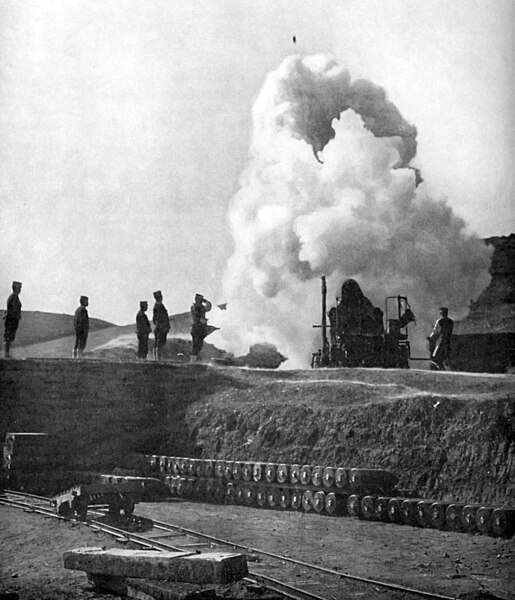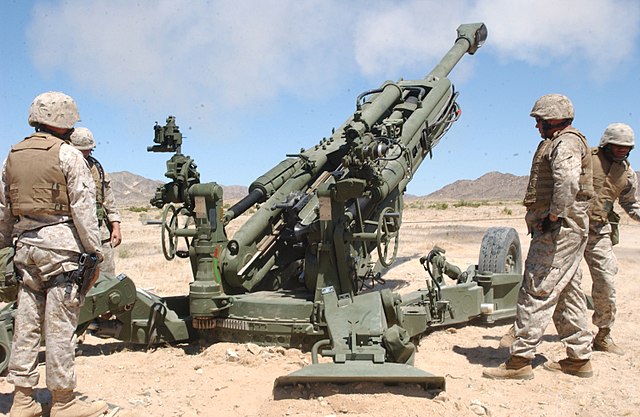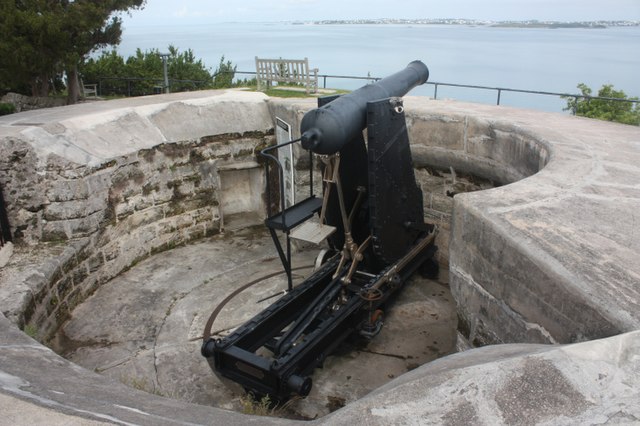Coastal artillery is the branch of the armed forces concerned with operating anti-ship artillery or fixed gun batteries in coastal fortifications.
An Ottoman redoubt of the Dardanelles Fortified Area. The weapon is possibly a German-made 28 cm SK L/40 gun on a coast defense mount.
50-pounder Model 1811 Columbiad (7.25 inch or 184 mm bore) and center-pivot mounting designed by George Bomford as an experimental coastal defense gun. This gun was built in 1811 as a component of the Second System of US fortifications.
Japanese 11-inch howitzer firing; shell visible in flight
One of the three 28 cm main battery guns at Oscarsborg
Artillery are ranged weapons that launch munitions far beyond the range and power of infantry firearms. Early artillery development focused on the ability to breach defensive walls and fortifications during sieges, and led to heavy, fairly immobile siege engines. As technology improved, lighter, more mobile field artillery cannons developed for battlefield use. This development continues today; modern self-propelled artillery vehicles are highly mobile weapons of great versatility generally providing the largest share of an army's total firepower.
US Artillerymen fire-off an artillery round with the newly fielded M777 Lightweight 155-millimeter Howitzer
French soldiers in the Franco-Prussian War 1870–71
British 64 Pounder Rifled Muzzle-Loaded (RML) Gun on a Moncrieff disappearing mount, at Scaur Hill Fort, Bermuda. This is a part of a fixed battery, meant to protect against over-land attack and to serve as coastal artillery.
7-person gun crew firing a US M777 Light Towed Howitzer, War in Afghanistan, 2009








